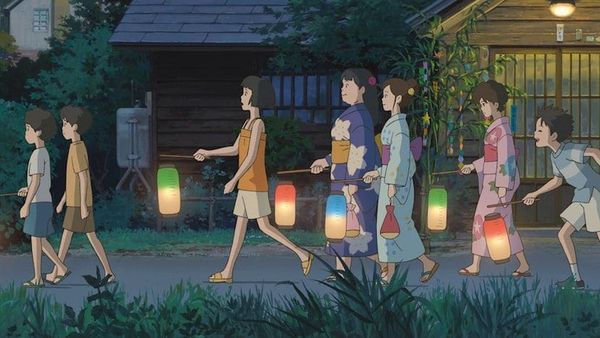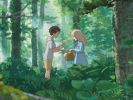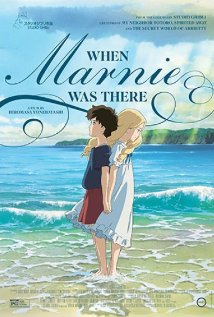Eye For Film >> Movies >> When Marnie Was There (2014) Film Review
When Marnie Was There
Reviewed by: Owen Van Spall

Director Hiromasa Yonebayashi’s (Arrietty) new animated film is being touted as the final Studio Ghibli picture for the foreseeable future, as the Japanese animation powerhouse seems set to go into a period of extended hiatus following the retirement of its long-serving director Hayao Miyazaki. The charming and elegantly designed When Marnie Was There is not a bad note to go out on, as it showcases the hand-drawn aesthetic and an admirable focus on female characters that is part and parcel of the Ghibli brand. That being said, it never reaches the soaring heights of the imagination of, say, Spirited Away, or hits the emotional depths of Grave Of The Fireflies.
In terms of tone, When Marnie Was There is in line with the "realistic" Ghibli films, such as From Up on Poppy Hill and Whisper Of The Heart, as the fantastical elements - it is essentially a sentimental ghost story - are low-key and only intrude occasionally into the real world. Once again, we have a young and troubled female character as our window into this modern-day story, in this case the sickly and withdrawn Anna, who is sent to live with relatives on the coast in order to get some fresh air.

Fascinated by a crumbling mansion that looms over the nearby marsh, she befriends the spirited young girl Marnie, who claims to live there. Marnie and Anna become close friends and Anna starts to slowly open up, but as time goes on, and she starts to dream about her new friend and the strange house, the line between the real and imagined and past and present becomes more and more blurred.
Visually and aurally there is plenty to enjoy in Yonebayashi’s film, with rural Japan lushly recreated right down to the lovely chirps of the cicadas and high angle views of bullet trains winding through the green valleys. The generations-spanning mystery at the heart of Marnie’s existence (the story isbased on Joan G Robinson’s novel, making it an interesting West-East translation), isn't hard to figure out though, and the coming of age/emotional healing arc that Anna goes through, although quite touching, feels more than a little familiar at this point in Ghibli’s output.
Reviewed on: 29 Oct 2015
















